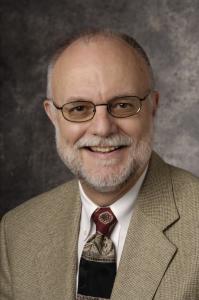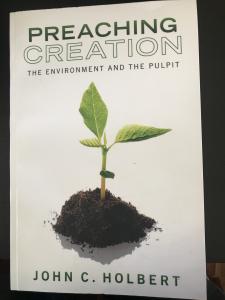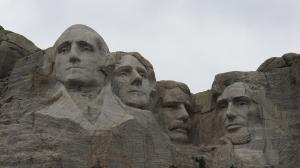 Recently, my wife Diana and I returned to Grinnell College for her 50th college reunion. I had had my 50th last year, so two trips to Iowa in two years was a special treat for us. Diana was deeply involved in the planning of her reunion and did a superb job of making the time very satisfying and great fun. In addition, she served on a panel with four other alums, reflecting on lives of social justice, and the ways that the college had influenced them in their pursuits. Diana had been a United Methodist minister and had served several unusual appointments, including an all African-American church, a community of artists who had been bored or burned by church, and a church that represented something of the wider world with parishioners from Burundi and Kenya along with many LGBTQ members in the same pews with many straight people of all ages. Her life of service was inspiring to contemplate as were the lives of her fellow panelists that included the first black federal judge from the state of Mississippi, an Anglo doctor who spent his entire medical career on the Navajo nation in Arizona and New Mexico, an attorney who created a street law program now available in many states and multiple countries, and an ordained United Church of Christ clergywoman who focused her ministry on children’s education and a demand for equal opportunities for poor children. It was a grand weekend.
Recently, my wife Diana and I returned to Grinnell College for her 50th college reunion. I had had my 50th last year, so two trips to Iowa in two years was a special treat for us. Diana was deeply involved in the planning of her reunion and did a superb job of making the time very satisfying and great fun. In addition, she served on a panel with four other alums, reflecting on lives of social justice, and the ways that the college had influenced them in their pursuits. Diana had been a United Methodist minister and had served several unusual appointments, including an all African-American church, a community of artists who had been bored or burned by church, and a church that represented something of the wider world with parishioners from Burundi and Kenya along with many LGBTQ members in the same pews with many straight people of all ages. Her life of service was inspiring to contemplate as were the lives of her fellow panelists that included the first black federal judge from the state of Mississippi, an Anglo doctor who spent his entire medical career on the Navajo nation in Arizona and New Mexico, an attorney who created a street law program now available in many states and multiple countries, and an ordained United Church of Christ clergywoman who focused her ministry on children’s education and a demand for equal opportunities for poor children. It was a grand weekend.
As we love to do, we travelled to Iowa from Los Angeles by car, travelling some 5000 miles, stopping along the way to spend time with friends and to visit some places we had yet to see. This time we decided to have a look at presidential libraries. Fortunately along our route we could visit three of these sites, the library/museums for Dwight Eisenhower, Harry Truman, and Herbert Hoover. Each had special gifts to offer, but I admit to being especially taken with the Hoover library in the tiny town of West Branch, Iowa, where he was born. My knowledge of Hoover was minimal, but I learned a great deal about his incredible generosity out of his vast fortune as well as his superb administrative skills demonstrated after both world wars of the 20th century. Unfortunately, the bulk of his memory has to do with his one term in office that coincided with the Great Depression. That fact led him to be pelted with garbage as he left the White House in 1932 in a motorcade. But there was far more to the man than that terrible memory.
To continue our presidential tour, we spent three nights in the Black Hills of South Dakota. We had been there 51(!) years before, but had little memory of what we had seen then. Of course, we went to the famous Mt. Rushmore which in the ensuing years has been greatly changed with a huge parking garage, a wall of flags leading to the monument itself, flying over a massive stone walkway, made grand by enormous stone arches. The sight of the four presidents—Washington, Jefferson, Lincoln, and Teddy Roosevelt—remains awe-inspiring, and the story of its carving still thrills. I admit that as I gazed at the four depicted in their massive stone images, I could not help but think of more recent presidents and could little imagine that their faces would ever be so carved on some future mountain place. Few if any of our more recent leaders could possibly be seen as having the stature of these giants. But then again, perhaps some distance in time might prove to future generations that these men—alas, they are still all men!—may be more significant than they appear at the moment. I shall resist commenting on the current occupant of our White House, but perhaps his recent visit to England and its accompanying giant balloons of his person in a diaper and another sitting on a toilet tweeting, might just capture the appropriate ways in which he should be remembered. But I digress.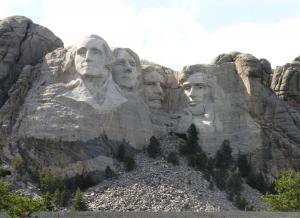
The next day after our Rushmore visit, we went to the unfinished monument of Crazy Horse, the Comanche chief who is being brought to enormous life on another mountain. His head is nearly finished, but his long pointing arm and the horse on which he will sit is far from completion. The sculptor has long since died, but his family has taken up the call to finish the monument. The initial goal of the huge statue was to give to Native peoples a hero to match the four presidents on Mt. Rushmore, and the work had the nearly full support of Native Americans, though in recent years the work has raised issues among some native people. Nevertheless, the work continues, and I hope that future visitors might see the completed statue in its full glory. The restaurants and shops around the mountain I found a bit tacky, but such accompaniments to monumental works always seem to be, I am sad to say.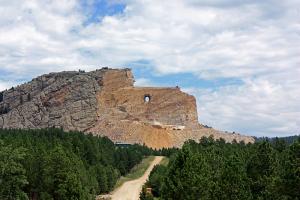
The Crazy Horse monument in the light of the four faces on Mt. Rushmore provides an interesting contrast in American icons. I did notice that the visitors to Mt. Rushmore were predominantly, if not exclusively, white in complexion, while at the Crazy Horse monument there were a significant number of native people, or so they appeared to this white American. It strikes me that modern America needs all the diverse monuments to heroic figures of the past that it can maintain. This does not mean that I think all Confederate statues and sculptures should remain in place; after all, those edifices commemorate persons who fought against America in order to maintain an odious way of life that necessitated the enslavement of millions of people. Then again, of course, Thomas Jefferson was a slaveholder, and fathered several children with one of those slaves, Sally Hemmings. Should that disqualify him from perpetual memorial on the mountain? I think not, but I admit that there is irony there.
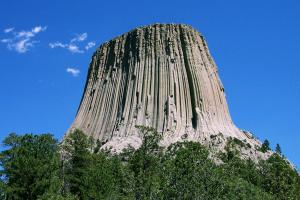 As we left the Black Hills on our way to Utah we stopped at Devil’s Tower, that strange rock formation made famous in the blockbuster movie, “Close Encounters of the Third Kind,” of some 40 years ago. It was different in person than it was depicted in the film; it did not stand freely and openly on a flat plain, but was seated on a large mound in the midst of a forest. But it was a startling sight nonetheless. It certainly does stand out in its landscape, and I will long remember seeing it at a distance and then close up. In light of the two human monuments we had visited, I must say I enjoyed the Devil’s Tower as much or more than the carved heads. There is something delightful about seeing something from the earth that has not been changed or manipulated by the hands of a human being. It was a great trip, all in all, and demonstrated again how delightful it is to see some of the wonders that our country has to offer and offers to the visitor many questions of the nature of the country and its fabulous diversity. Now, more than ever, we must find ways to celebrate that diversity and not close ourselves off from the many wonders that diverse people can provide.
As we left the Black Hills on our way to Utah we stopped at Devil’s Tower, that strange rock formation made famous in the blockbuster movie, “Close Encounters of the Third Kind,” of some 40 years ago. It was different in person than it was depicted in the film; it did not stand freely and openly on a flat plain, but was seated on a large mound in the midst of a forest. But it was a startling sight nonetheless. It certainly does stand out in its landscape, and I will long remember seeing it at a distance and then close up. In light of the two human monuments we had visited, I must say I enjoyed the Devil’s Tower as much or more than the carved heads. There is something delightful about seeing something from the earth that has not been changed or manipulated by the hands of a human being. It was a great trip, all in all, and demonstrated again how delightful it is to see some of the wonders that our country has to offer and offers to the visitor many questions of the nature of the country and its fabulous diversity. Now, more than ever, we must find ways to celebrate that diversity and not close ourselves off from the many wonders that diverse people can provide.
(images from Wikimedia Commons)


